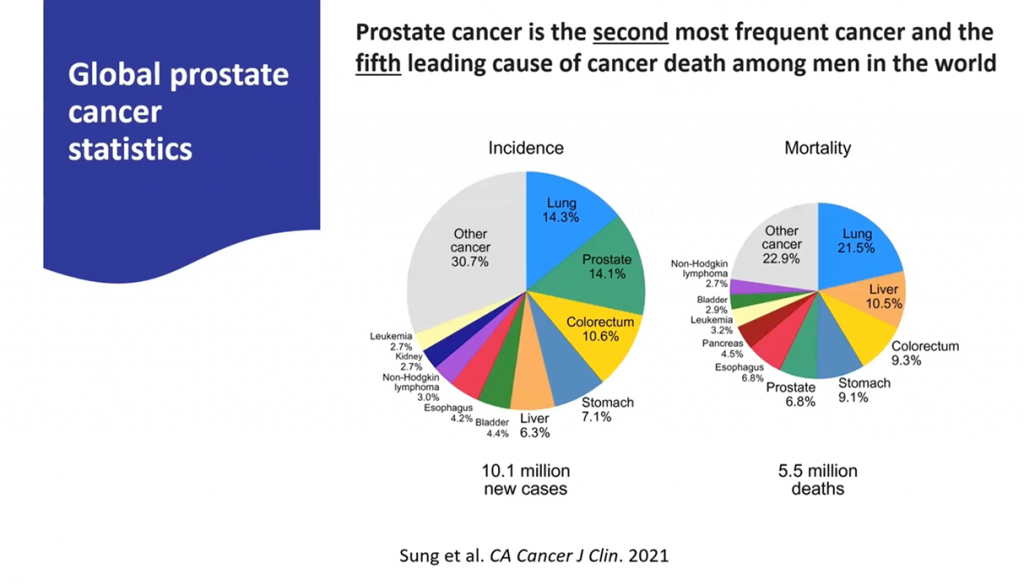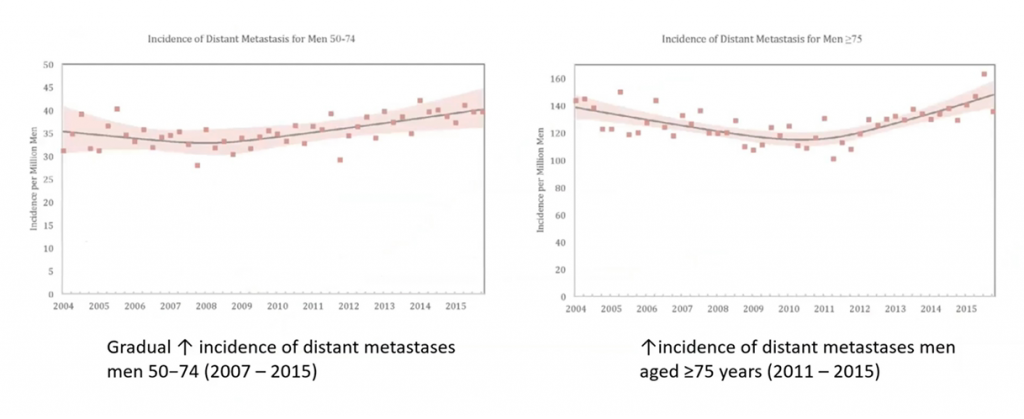Prostate cancer is globally the second most common cancer in men. It is also the fifth leading cause of cancer death in men.

Global cancer deaths in males
The PSA (Prostate Specific Antigen) is a simple blood test to detect prostate cancer. Before its discovery, most prostate cancers were only detected when the cancer was more advanced or only after it had spread. After its discovery, we realized that it could be used for screening of prostate cancer and in this setting it allows us to detect early stage prostate cancer.
Multiple large scale studies showed 30% less deaths related to prostate cancer after starting PSA screening. But there were also controversies around PSA testing. In 2011, the US preventative task force took PSA screening off its recommendations as they felt that there was overtreatment and patients had to deal with the side effects of impotence and incontinence that may occur after treatment. Unfortunately, since that decision, there has been a steady rise of late stage (metastatic) prostate cancer.
Patients who would have been cured if they had gone for PSA screening were being picked up at very late stages of the disease and were having their lives cut short because of prostate cancer. Since then, the US preventative task force has backpaddled and now recommends PSA testing after a consultation about its risks and benefits with a physician.

Rising numbers of late stage prostate cancer after stopping PSA screening
More importantly, there have been a few new developments since 2011. We have seen much better tests, more accurate biopsies and more importantly a better understanding of prostate cancer which spares many men from even requiring treatment.
In the last few years, we have seen the development of MRI prostate imaging. This kind of imaging gives us a 90% sensitivity of picking up prostate cancer. We can now also easily do targeted biopsies of the prostate. This means that when we find an abnormality on the MRI of the prostate, we can specifically target the area for biopsy. There is a lot less guessing where the prostate cancer might be.

Targeted biopsy of the prostate
In the last few years, we have also realized that there are 2 groups of prostate cancers; The low risk ones and the clinically significant cancers. When detected early, the clinically significant cancers can be treated and be potentially curative. It can save a man from dying from prostate cancer. At the same time, there is a group of men who will have low risk prostate cancers. We now know that low risk prostate cancers hardly if ever spread beyond the prostate. Large studies show that even at 15 years, there is a less than 1% risk of it spreading beyond the prostate and causing problems. These cancers do not require treatment thus sparing the men from the side effects of treatment.
Today, we have accurate detection of prostate cancers and are now avoiding unnecessary treatments in men with low risk prostate cancer. PSA testing saves lives. It prevents late detection of cancers and for patients with clinically significant cancers. This early detection, early and accurate biopsy and early intervention allows men to continue living long and fulfilling lives. Furthermore, even when the PSA is within the ‘normal’ range, it can give us a better idea about the future risk of prostate cancer death. For example, if the PSA of a middle aged individual is above 2.4ng/ml, he has a higher risk of a significant prostate cancer in the future as compared to someone with a PSA of less than 1ng/ml and should be followed up.
I advocate for a PSA test at 45 years of age. Of course, if there is a family history of prostate cancer or a higher risk of prostate cancer, I would start PSA testing at 40 years of age.
Let’s save more lives with PSA testing.









